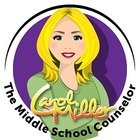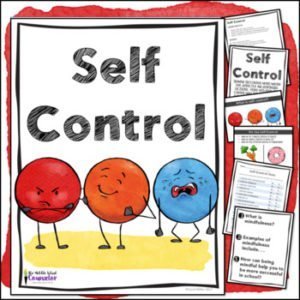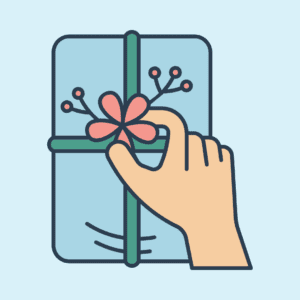Just like classroom teachers, it is important that we are considering and differentiating our teaching and support for students with special needs. As a school counselor, it can be challenging to plan for the variety of needs you might have in a class you don’t see frequently. Let’s see how some counselors structure guidance lessons for special needs students. Share your tips in the comments.
[su_divider top=”no” style=”double” divider_color=”#af1c1c” link_color=”#000000″] [su_divider top=”no” style=”dashed” divider_color=”#af1c1c” link_color=”#000000″][/su_divider]
Routines
 Having a consistent routine is a strategy I use when I teach self-contained classes. This helps students who have difficulty breaking from the normal routine know what to expect.
Having a consistent routine is a strategy I use when I teach self-contained classes. This helps students who have difficulty breaking from the normal routine know what to expect.
My routine consists of starting out with a greeting. Many of my special education classes are working with children ages 3-6 years old with a range of disabilities, but many of them are non-verbal. I personally like to give each child a high five.
Then, we dance to a song and listen to a story on the SMARTboard. After the story, we transition to a table for an activity. I like to engage my students through crafts where they can practice fine motor skills. Our school occupational therapist loves it too! My favorite activities include using giant tweezers, clay mats, simple puzzles, and sensory play. Here’s my favorite sensory activity with sand.
[su_divider top=”no” style=”double” divider_color=”#af1c1c” link_color=”#000000″] [su_divider top=”no” style=”dashed” divider_color=”#af1c1c” link_color=”#000000″][/su_divider]
Repetition
 Don’t forget that repetition is good! A lot of counselors try to teach different lessons every time. However, for students with special needs, repetition can be helpful in mastering a concept. I usually work with the teacher to decide what to repeat in a lesson (concepts) and what to refresh (a song or book). When in a pinch, many of my special education classes are thrilled to do the same lesson twice.
Don’t forget that repetition is good! A lot of counselors try to teach different lessons every time. However, for students with special needs, repetition can be helpful in mastering a concept. I usually work with the teacher to decide what to repeat in a lesson (concepts) and what to refresh (a song or book). When in a pinch, many of my special education classes are thrilled to do the same lesson twice.
Rebecca at Counselor Up
[su_divider top=”no” style=”double” divider_color=”#af1c1c” link_color=”#000000″] [su_divider top=”no” style=”dashed” divider_color=”#af1c1c” link_color=”#000000″][/su_divider]
Plan & Move
 We do not have any self-contained special education classrooms at my school. All students are in co-taught classrooms where the special education teacher differentiates the learning for those students who need it. With that said, my lessons for students with special needs often occur in small groups. Typically I am teaching social skills and working to meet IEP goals, however, I do many counseling lessons in our time together.
We do not have any self-contained special education classrooms at my school. All students are in co-taught classrooms where the special education teacher differentiates the learning for those students who need it. With that said, my lessons for students with special needs often occur in small groups. Typically I am teaching social skills and working to meet IEP goals, however, I do many counseling lessons in our time together.

Having a well-planned lesson that allows students movement is key. Students that sit still and work quietly often are not as engaged as those who move around, talk to partners, go to the board, or demonstrate learning with experiential learning. If I am working within the classroom, I incorporate movement as well and will break students into pre-assigned groups. Allowing students to group themselves adds extra stress to students, so knowing who to partner students with ahead of time, alleviates that anxiety. It also makes sure that every student is accounted for and has someone to work with. My favorite lesson is this one on self-control.
– Carol Miller – The Middle School Counselor
[su_divider top=”no” style=”double” divider_color=”#af1c1c” link_color=”#000000″] [su_divider top=”no” style=”dashed” divider_color=”#af1c1c” link_color=”#000000″][/su_divider]

Check out more Confident Counselors Conversations!







